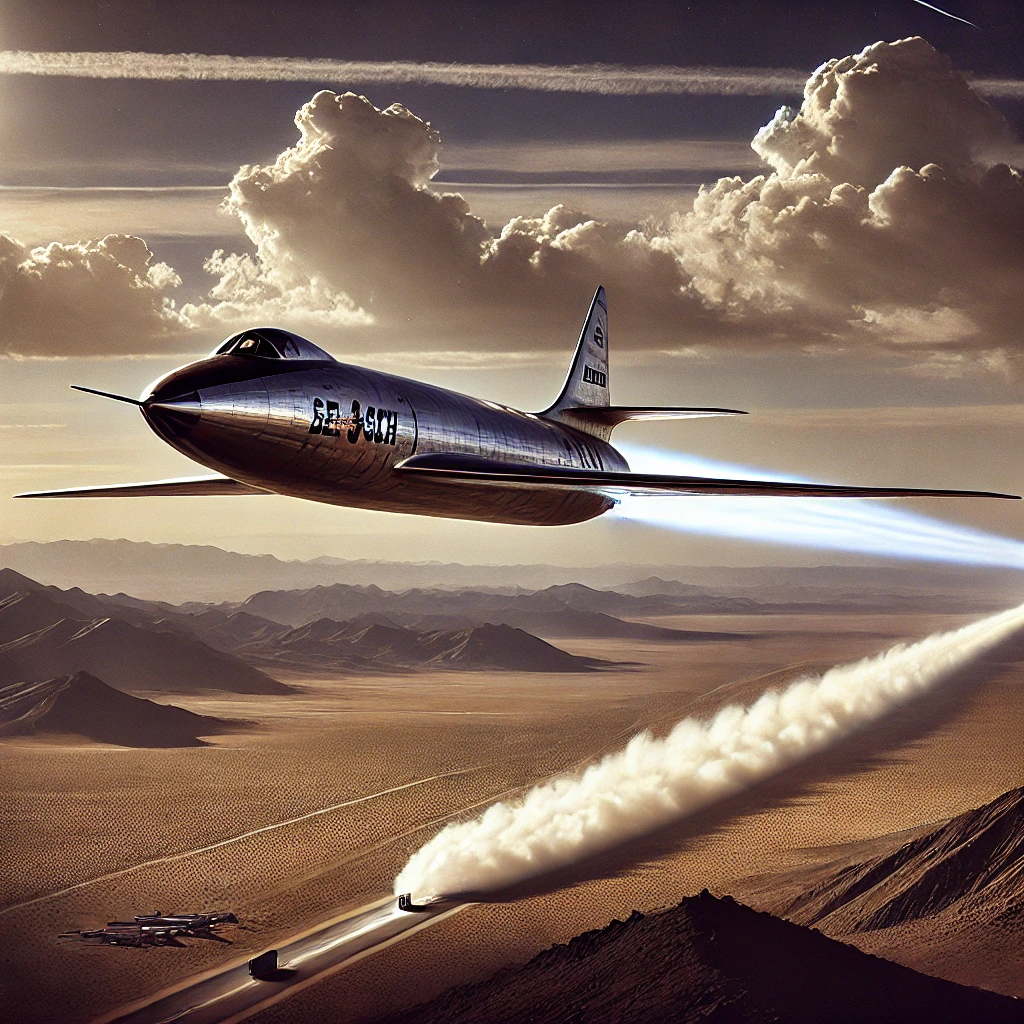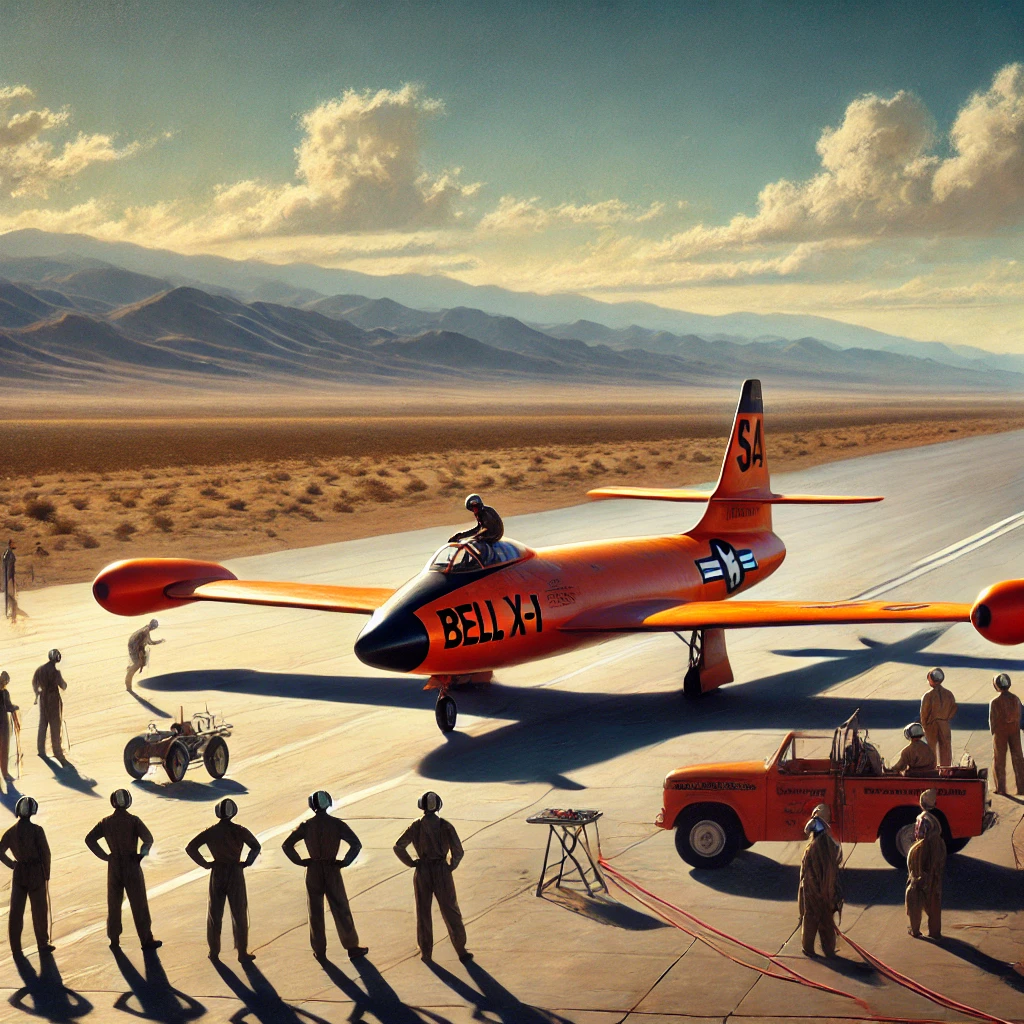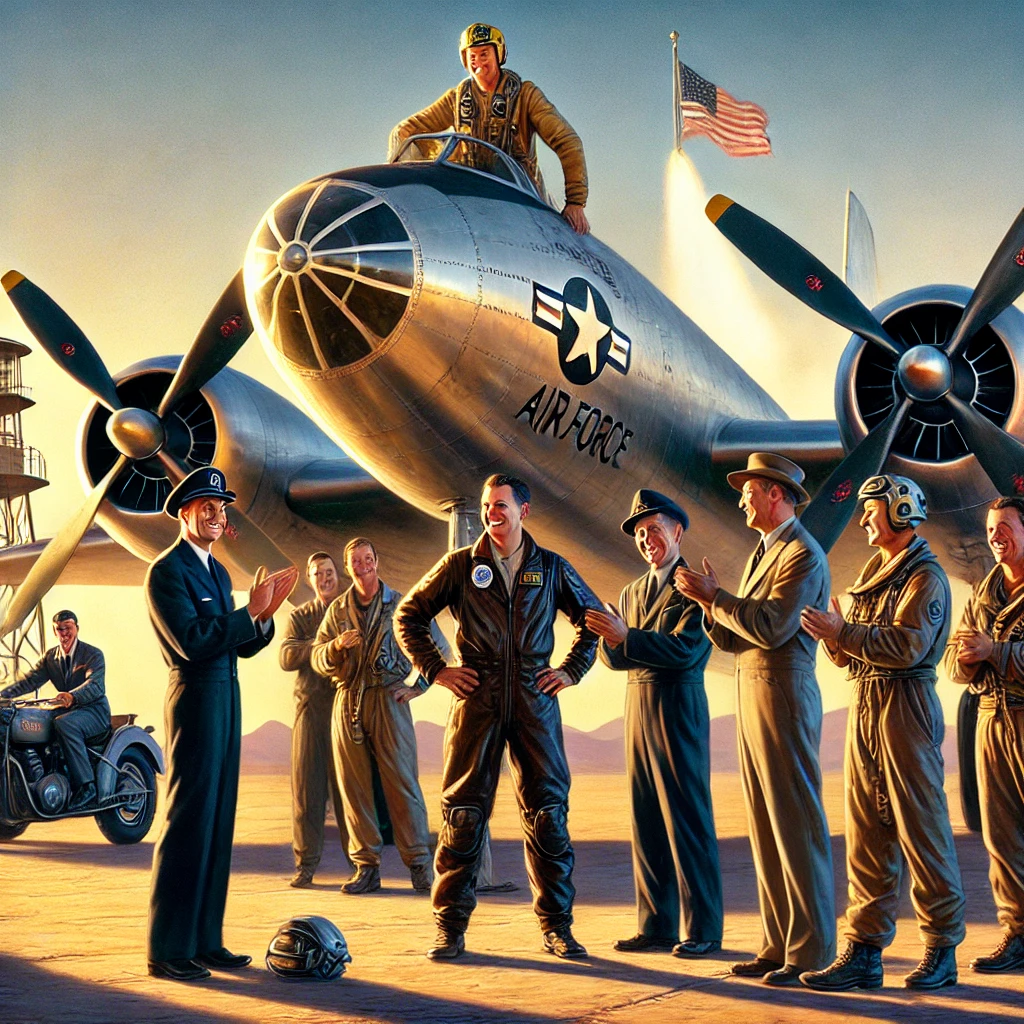On October 14, 1947, U.S. Air Force Captain Chuck Yeager achieved a monumental milestone in aviation history by becoming the first person to break the sound barrier. Piloting the Bell X-1, an experimental rocket-powered aircraft, Yeager’s flight not only marked a significant technological achievement but also opened the door for advancements in military and civilian aviation. This groundbreaking event has since become a symbol of human ingenuity and the relentless pursuit of progress.

The Road to the Record
Chuck Yeager’s journey to this historic achievement began long before his famous flight. Born on February 13, 1923, in Myra, West Virginia, Yeager developed a passion for flying at a young age. He enlisted in the Army Air Forces during World War II and quickly distinguished himself as a skilled pilot, flying combat missions in Europe. His experience in the war laid the groundwork for his later contributions to aviation.
After the war, Yeager became involved in the cutting-edge research of supersonic flight. The development of the Bell X-1 was part of a broader effort by the U.S. military to explore the challenges and possibilities of breaking the sound barrier. At that time, the concept of flying faster than the speed of sound was met with skepticism, as many believed it would be impossible or too dangerous. Yeager, however, was determined to push the boundaries of flight.

The Historic Flight
On the morning of October 14, 1947, Yeager climbed into the Bell X-1, which was named “Glamorous Glennis” in honor of his wife. The aircraft was carried aloft by a B-29 Superfortress before being released at an altitude of approximately 25,000 feet. Once airborne, Yeager activated the X-1’s rocket engine and initiated his descent, rapidly accelerating toward the speed of sound.
At 10:30 a.m., as Yeager piloted the aircraft through the high desert skies of California, he successfully broke the sound barrier at an astonishing speed of Mach 1.06 (approximately 700 miles per hour). As he flew through the sound barrier, he experienced a brief but significant moment of shock and exhilaration. The sound barrier had been shattered, and Yeager’s successful flight was a testament to his skill and courage as a pilot.
The Aftermath and Impact
Yeager’s historic achievement was met with widespread acclaim and recognition. His successful flight demonstrated the potential for supersonic flight and inspired further research and development in aerodynamics and jet propulsion. The implications of breaking the sound barrier extended beyond military aviation, leading to advancements in commercial aviation and the eventual development of supersonic passenger jets.

Yeager’s achievement also marked a significant moment in the Cold War era, showcasing the technological prowess of the United States in the face of growing tensions with the Soviet Union. The success of the Bell X-1 and subsequent supersonic flights contributed to the U.S. military’s competitive edge in aviation and aerospace technology.
A Legacy of Inspiration
Chuck Yeager’s groundbreaking flight remains a source of inspiration for aviators and engineers alike. He continued to serve in the U.S. Air Force and became a test pilot for various aircraft, earning a reputation as one of the most skilled pilots in history. Yeager’s accomplishments paved the way for future generations of pilots and engineers, encouraging innovation and exploration in the field of aviation.
The successful breaking of the sound barrier by Chuck Yeager on October 14, 1947, marked a defining moment in the history of aviation. His remarkable achievement not only demonstrated the possibilities of human ingenuity but also inspired generations to push the limits of flight. As we reflect on Yeager’s legacy, we recognize the importance of his contribution to the advancement of aviation and the continued quest for exploration and innovation. Yeager’s name is forever etched in history as a pioneer whose courage and determination reshaped the future of flight and opened new horizons for humankind.
